If you’re looking for some easy aquarium plants that can grow in sand, you’ve come to the right place. In this article, we’ll show you 11 different plants that will thrive in a sand substrate. We’ll also provide some tips on how to care for these plants so that they can reach their full potential.
What it takes to allow plants to grow in sand
Aquariums are a great way to bring a bit of the outdoors inside, and adding live plants is a great way to spruce up your décor. But if you’re thinking of adding plants to your aquarium, you may be wondering if they can grow in sand.
The good news is that there are plenty of plants that can grow in sand. In fact, sand is often used as a substrate for aquarium plants because it’s easy to keep clean and it doesn’t compact over time like other substrates.
That said, there are a few things to keep in mind if you want your plants to thrive in sand. This type of sand is usually finer than regular sand and won’t cloud up your water. First, make sure to choose a sand that is specifically designed for aquariums.
Second, you’ll need to add some fertilizer to the sand to help the plants grow. There are many different types of aquarium plant fertilizer available, so talk to your local fish store to find the best option for your plants.
Finally, remember that not all plants do well in sand. Some plants need a coarser substrate to anchor their roots, so it’s important to do your research before adding any plants to your aquarium.
With a little bit of planning, you can easily create a beautiful and thriving aquarium that features live plants growing in sand.
1. Amazon Swords
This popular plant is native to the Amazon River Basin and is well-suited to a wide range of aquariums. Amazon Swords are hardy plants that can tolerate a wide range of water conditions and are relatively easy to propagate. If you’re looking for an easy-to-care-for aquarium plant that can grow in sand, look no further than the Amazon Sword.
They will also do best in an aquarium with a temperature of 72-82 degrees Fahrenheit. While Amazon Swords can tolerate a wide range of water conditions, they prefer water that is slightly acidic with a pH of 6.0-7.0. Amazon Swords can be propagated by dividing the plant at the root ball or by taking stem cuttings.
If you’re looking for an easy-to-care-for aquarium plant that can add some greenery to your tank, the Amazon Sword is a great option.

2. Vallisneria
Vallisneria is a popular choice for aquariums and aquascaping due to its ability to grow in sand, as well as its hardiness and fast growth rate. Vallisneria is a genus of freshwater aquatic plants known commonly as eelgrass, tape grass or vallis. The genus is native to temperate and tropical regions of the world, and contains around 50 species.
Vallisneria is a popular choice for aquariums and aquascaping due to its ability to grow in sand, as well as its hardiness and fast growth rate. Vallisneria is a genus of freshwater aquatic plants known commonly as eelgrass, tape grass or vallis. The genus is native to temperate and tropical regions of the world, and contains around 50 species.
Vallisneria is a popular choice for aquariums and aquascaping due to its ability to grow in sand, as well as its hardiness and fast growth rate. Vallisneria is a genus of freshwater aquatic plants known commonly as eelgrass, tape grass or vallis. The genus is native to temperate and tropical regions of the world, and contains around 50 species.
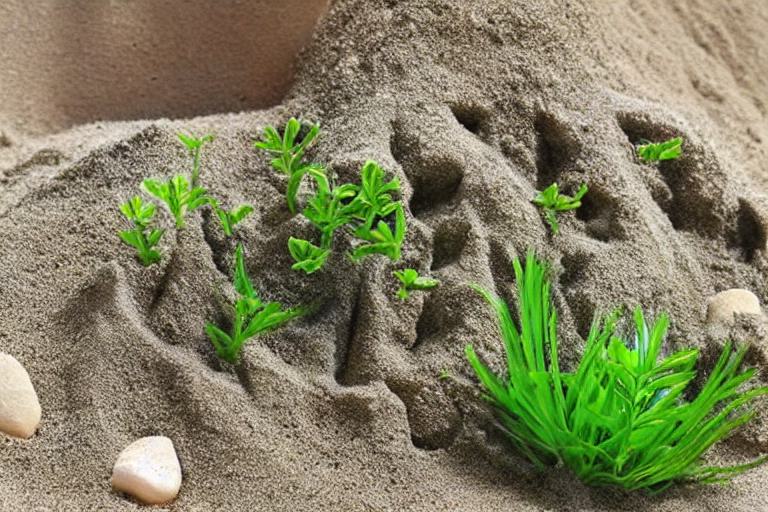
3. Cryptocoryne
Cryptocoryne is a popular genus for aquariums because the plants are relatively easy to care for and can thrive in a wide range of water conditions. Cryptocoryne is a genus of aquatic plants that are native to Sri Lanka and India. The plants in this genus are typically found in slow-moving waters, such as ponds and streams.
The plants can grow to be quite large, with some species reaching heights of up to 2 feet. Cryptocoryne plants are typically green, but some species may have leaves that are red, brown, or purple. Cryptocoryne is a slow-growing genus, so patience is required when growing these plants.
Cryptocoryne plants are generally undemanding and can thrive in a wide range of water conditions. The plants do best in water that is soft to medium-hard and has a neutral to slightly acidic pH. Cryptocoryne plants can also tolerate a wide range of temperatures, but they will grow best in waters that are between 68-82 degrees Fahrenheit.
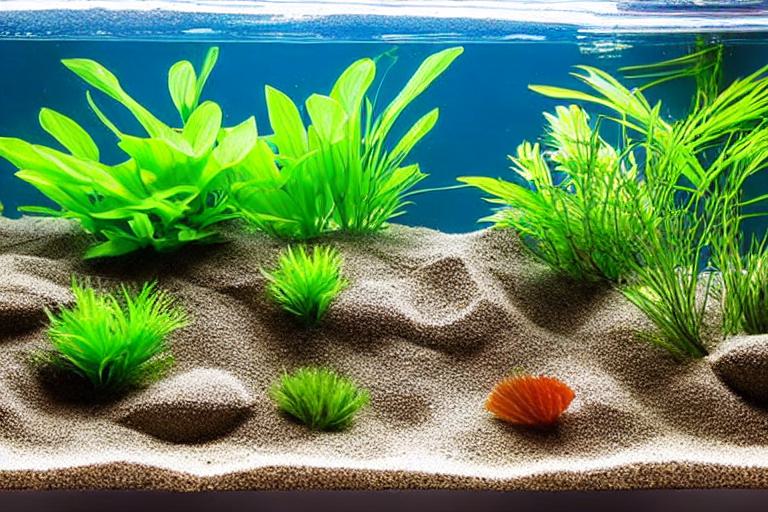
4. Dwarf Hygro (Hygrophila polysperma)
If you’re looking for an easy aquarium plant that can grow in sand, look no further than the Dwarf Hygro (Hygrophila polysperma). This plant is native to India and Sri Lanka, and it’s a popular choice for aquarists because it’s relatively low-maintenance and can tolerate a wide range of water conditions.
The Dwarf Hygro is a fast-growing plant, so it’s ideal for beginners who want to see results quickly. It can reach heights of up to 20 inches, but it can be trimmed back if it gets too big for your aquarium. This plant prefers moderate to high lighting, and it will do best in a sandy substrate.
If you’re looking for an easy-to-care-for plant that can add some color and interest to your aquarium, the Dwarf Hygro is a great choice.
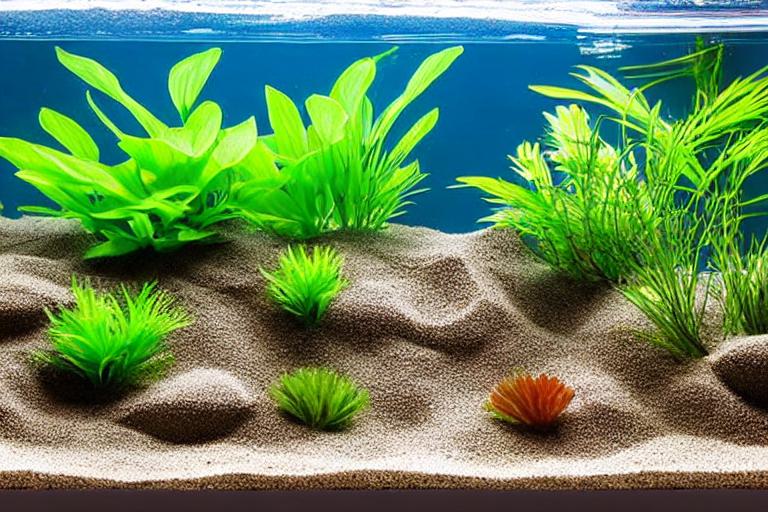
5. Anacharis Elodea (water weeds)
Anacharis Elodea, also known as water weeds, are a common type of aquarium plant. Water weeds are a great source of oxygen for your fish and can help to keep your aquarium clean. They are typically found in ponds and lakes, but can also be grown in aquariums. They are easy to care for and can grow in sand, making them a great choice for beginner aquarium enthusiasts. Anacharis Elodea are fast-growing plants that can reach up to 12 inches in height.
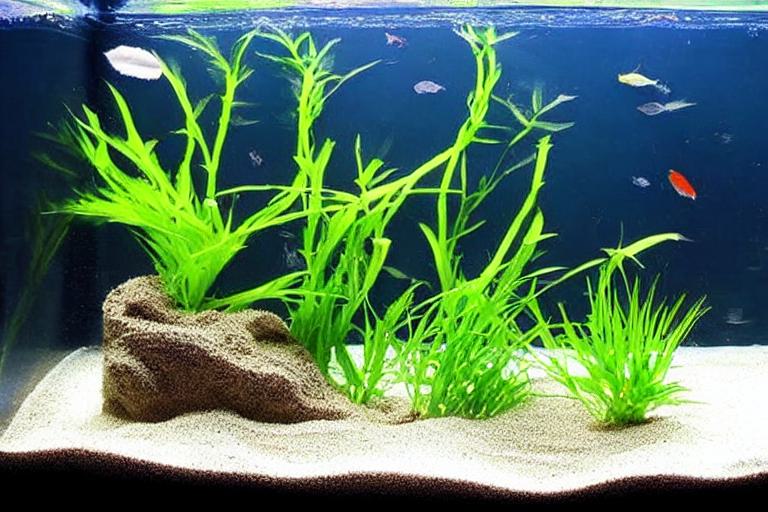
6. Hornwort
Hornwort is one of the most popular aquarium plants because it is so easy to grow. Hornwort will help to keep your aquarium clean by absorbing nutrients and providing oxygen to the water. It can be grown in sand or gravel and does not need any special care.
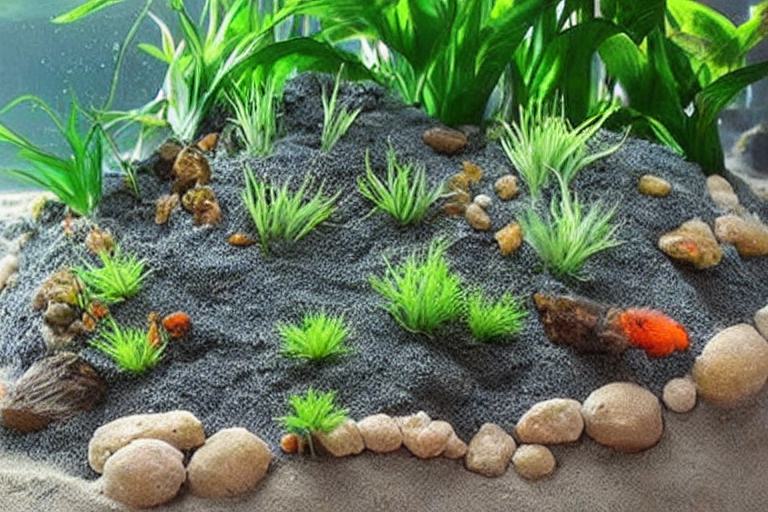
7. Cabomba
Cabomba can grow to be quite large, so it is best suited for larger aquariums. Cabomba is a beautiful, easy-to-grow aquarium plant that can thrive in sand. This plant prefers to be in well-lit areas of the aquarium, and will do best in a sandy substrate. This plant is perfect for beginners, as it is very easy to care for.
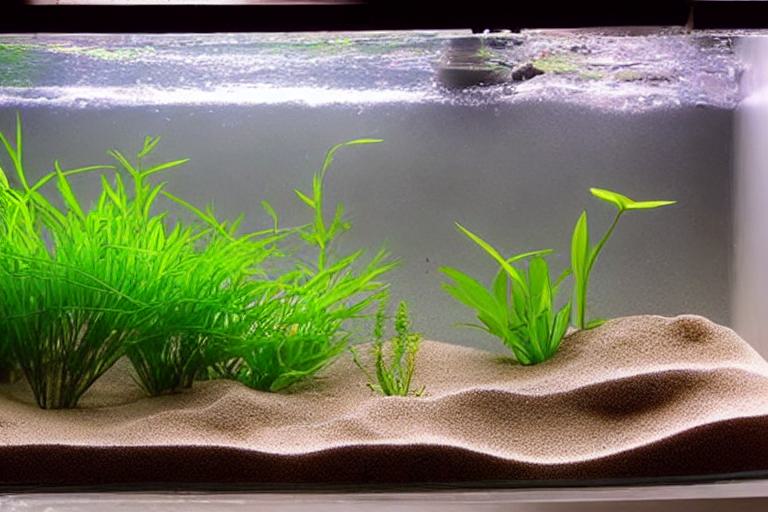
8. Tiger lots
If you’re looking for an easy-to-care-for plant for your aquarium, consider one of these 11 species that can grow in sand.
It has large, round leaves that are variegated with yellow and green, and its flowers are white with yellow centers. Tiger lotus (Nymphaea lotus) is a beautiful aquatic plant that’s easy to care for and can thrive in sand.
It’s a fast-growing plant that has delicate, fern-like leaves. It’s also relatively tolerant of low light levels, making it a good choice for beginner aquarists. Water sprite (Ceratopteris thalictroides) is another good option for sand-based aquariums.
It has dark green, leathery leaves that are often used as a background plant in aquariums. Java fern (Microsorum pteropus) is a tough plant that can grow in a wide range of conditions, including sand. Java fern is also very slow-growing, so it won’t take over your tank.
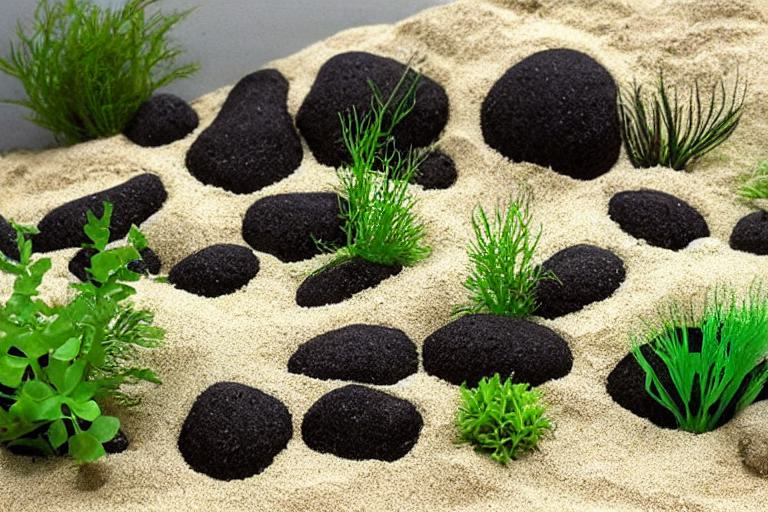
9. Java Moss
Java moss is a low-maintenance plant that does not require much care. Java moss is a great plant for beginners and experienced aquarium hobbyists alike. It is a hardy plant that can grow in a variety of conditions, including sand. It can be left to grow on its own or trimmed to create a desired shape. Java moss is a type of moss that is commonly used in aquariums.
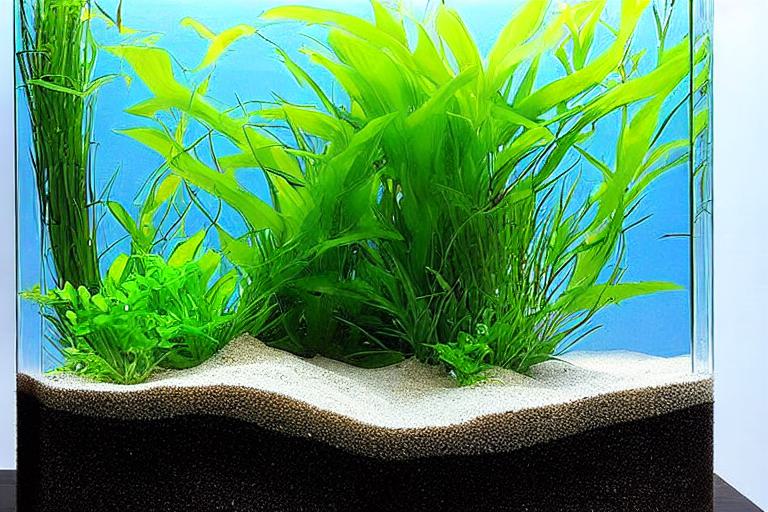
10. Anubias
The plants are native to Africa and can be found in many different habitats, from marshes to rivers. Anubias is a genus of aquatic plant that can grow in sand. Anubias is a popular genus for aquariums because of its ability to grow in sand and its low maintenance requirements.
Anubias plants are slow-growing and can live for many years in the right conditions. They are tolerant of a wide range of water conditions and can even grow in brackish water. There are many different species of Anubias, but some of the most popular for aquariums include Anubias barteri, Anubias nana, and Anubias Congensis.
They are hardy plants that require little care, and they can add a beautiful, natural look to your aquarium. Anubias plants are a great addition to any aquarium, especially those with sand substrates.
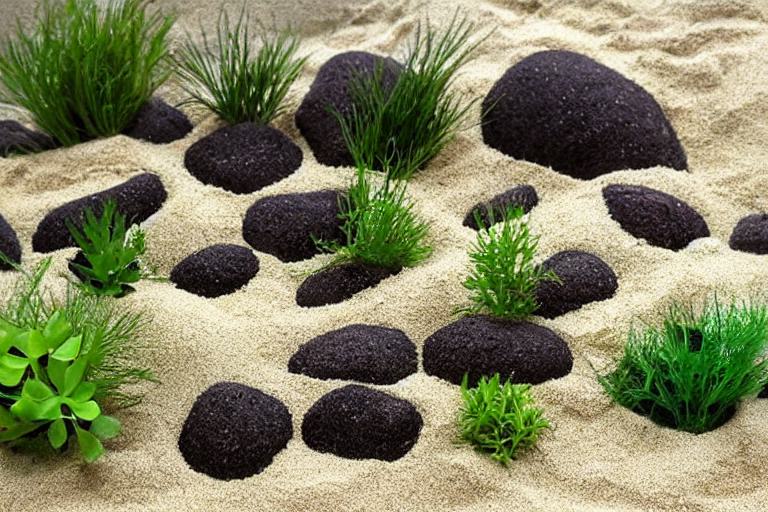
11. Java Fern
This plant is perfect for beginners as it is very easy to care for. This plant can tolerate a wide range of water conditions and is very adaptable. Java Fern is a slow growing plant, so it does not require much maintenance. Java Fern is one of the most popular aquarium plants and can grow in sand with ease. Java Fern is also a great plant for breeding tanks as it provides a safe place for fry to hide.

My Favorite Fishtank Products to Make Life Easier
There are a few products that I really love that make life with a fishtank so much easier. It’s a total life saver! One is the Python No Spill Clean and Fill Aquarium Maintenance System. This product attaches to your faucet and allows you to easily and quickly change your water without making a mess.
It’s a great way to add some style to your home while also making fishkeeping easier. This is a beautiful, modern fishtank that comes with built-in LED lighting. Another great product is the Fluval Edge 6 Gallon Aquarium with LED Lighting.
This filter is great for keeping your water clean and clear. Finally, I really love the AquaClear 50 Power Filter. It’s easy to install and really does a great job at keeping your water looking its best.
Frequently Asked Questions
1. What are the benefits of growing aquarium plants in sand?
Aquarium plants grown in sand tend to be more resilient and require less maintenance than those grown in other substrates. They also help to keep the aquarium clean by absorbing nutrients and preventing algae growth.
2. What types of aquarium plants can be grown in sand?
Some of the most popular aquarium plants that can be grown in sand include Anubias, Java Fern, and Cryptocoryne.
3. How do I prepare the sand for my aquarium plants?
The sand should be rinsed thoroughly before being added to the aquarium. This will help to remove any dust or debris that could potentially harm the plants.
4. How do I plant the aquarium plants in sand?
To plant the aquarium plants in sand, simply dig a small hole in the substrate and insert the roots of the plant. Gently press the sand around the roots to secure the plant in place.
5. What is the best way to care for aquarium plants grown in sand?
Aquarium plants grown in sand require the same basic care as those grown in other substrates. They should be fertilized regularly and provided with adequate lighting and water flow.
6. What are some common problems associated with growing aquarium plants in sand?
One of the most common problems associated with growing aquarium plants in sand is compaction. This can occur when the sand is not rinsed properly before being added to the aquarium. Compaction can cause the roots of the plants to suffocate and prevent them from receiving the necessary nutrients.
7. How can I prevent compaction from occurring in my aquarium?
To prevent compaction, be sure to rinse the sand thoroughly before adding it to the aquarium. You can also add a layer of gravel on top of the sand to help keep it in place.
8. My aquarium plants are not doing well in the sand. What should I do?
If your aquarium plants are not doing well in the sand, you may need to add some additional nutrients to the substrate. You can also try moving the plants to a different location in the aquarium or replanting them in a different substrate.
9. Can I grow live plants in my aquarium if I have sand as my substrate?
Yes, you can grow live plants in your aquarium even if you have sand as your substrate. Just be sure to provide the plants with the necessary nutrients and lighting.
10. What are some of the best live plants to grow in an aquarium with sand as the substrate?
Some of the best live plants to grow in an aquarium with sand as the substrate include Anubias, Java Fern, and Cryptocoryne.
Final thoughts
Aquarium plants are a great way to add some color and life to your fish tank. These 11 easy aquarium plants can all grow in sand, making them a great option for beginner fishkeepers. With a little care and attention, you can have a beautiful aquarium that will be the envy of all your friends.
